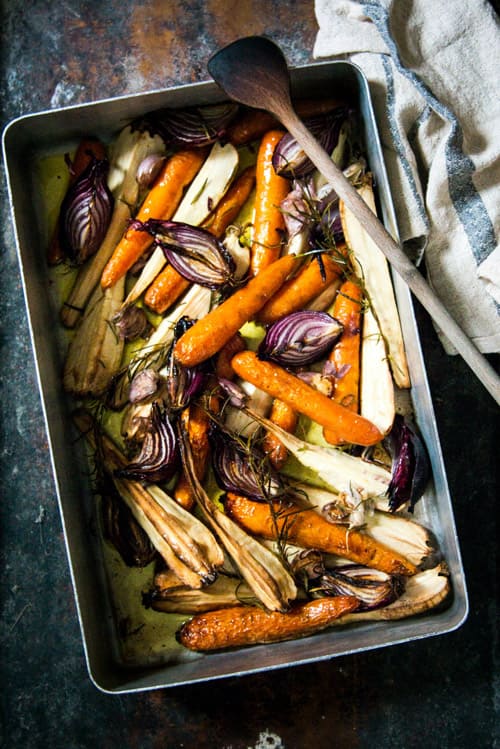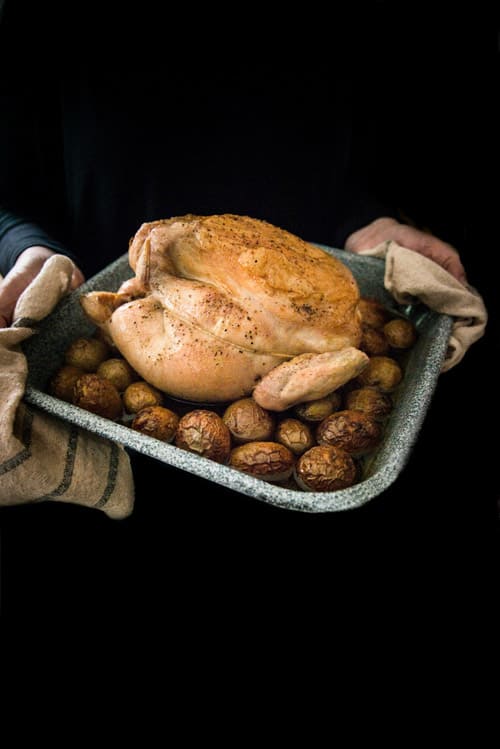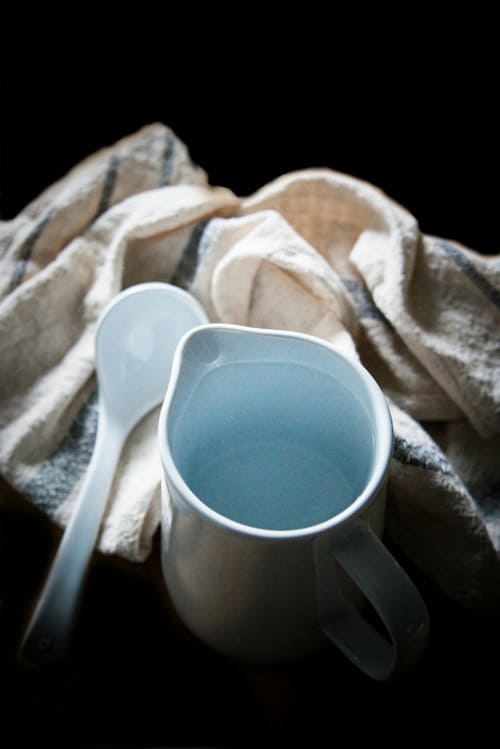Our site uses cookies to give you the best experience. or continue shopping if you're happy.
Accept & closeSunday Roast Tips & Tricks
Try out all these tips and tricks to perfect your Sunday roast.
"Ah, it’s Autumn. Finally! Gone are the hot days when all we could request for our Sunday dinner was salad unless we wanted to run the risk of somebody going “What? A roast? But it’s sooo hot outside…” or actually roast ourselves preparing it due to the combined temperatures of the summer heat and oven temperature. No, now it’s crisp and cold, grey and rainy and the perfect time to think about comfort food. And a Sunday roast should – in my opinion at least – be exactly that: comforting and social without turning into a major operation that will leave us stressed out."
Of course it can all be made as complicated and fancy as you wish, but I quite like the idea of a good meal that requires just the right amount of thought, effort and preparation without having to spend an entire day in the kitchen. On top of that, if oven space is somewhat restricted (i.e. you don’t happen to have some sort of range cooker), then it’s important to think a little bit about how such a meal will fit into it. In that case, why not make the roasting dishes do double duty? Of course you can (and possibly traditionally would) roast your potatoes in one dish, the meat in another, the parsnips in a third and possibly the carrots in a fourth. However, you could easily find yourself flustered and the ingredients fighting for space.
So, in order to save space and try a different take on roast vegetables, why not roast parsnips, carrots and red onions together with crushed cloves of garlic and sprigs of rosemary? Along with using extra virgin olive oil, this will give your vegetables a bit of Mediterranean twist.

Whatever meat you’re looking to serve, you should try and buy the best quality possible. I like to go for the humble chicken. To get the skin golden and crispy and the meat tender and juicy, it’s a good idea to immerse it in salt brine over night.
Just fill a container/pot with water and add salt (around 90g per liter, you can also add some herbs and/or garlic), stir until the salt is dissolved and add the chicken. Cover and leave in the fridge over night. When you’re ready to roast the chicken, remove it from the brine making sure you drain it from the cavities, pat it dry with some kitchen roll, rub it in some oil and add a little salt and pepper.
Place a small rack inside the roasting tin and the chicken on top. Roast according to weight. Before serving the chicken (or other meat), get it out of the oven and cover in tinfoil and a tea towel to keep it warm. Rest for 10 minutes (which also gives you time to assemble all the other components) before carving.

Of course no Sunday roast would be complete without roast potatoes! If you’re tight on time, you can peel them the night before and leave them in cold water over night. Parboil the potatoes and then put them into a sieve or colander and give them a good shake to roughen up the outer layer. This will crisp the outside up beautifully when roasting.
For a non-traditional, time saving (and, again, space saving) alternative, why not use baby new potatoes? You can roast these with the skin on and if you cannot fit another tin into your oven, then you can roast them in the same dish as the chicken. If you’re planning to do this, then you should add some olive oil to the bottom of the pan before putting the chicken in the oven. After the chicken has roasted for the first half hour, carefully take it out to drain some of the juices from the cavity – you can still baste it with the oil – and add the potatoes. Roast for the remaining time.

You will, of course, also need some gravy or sauce. Since the gravy is pretty much the first thing to go cold once on the table, fill up your gravy boat or sauce jug with boiling water before using it for the sauce. Preheating it will ensure your gravy stays warmer for longer.

I personally struggle (but that’s probably just me?) with gravy as I find it often too watery or thin. So, I like to make a sauce that is just a little thicker. For that I use the fat and juices (yes, I know that seems wrong, but it’s always worked for me) from the roast chicken which I heat up to boiling point. I then add some flour (roughly 50% fat and 50% flour) whilst furiously whisking to make a roux. Continue whisking for a couple of minutes until the roux has lost its “dry” look. Then add chicken stock (whilst still whisking) bit by bit until I have a fairly thick sauce. You don’t want the sauce to be too thin! Now I add white wine to give it an extra layer of flavour (taste the sauce to determine how much you’re comfortable with), which will of course thin the sauce a little more. The white wine complements the chicken as well as the vegetables beautifully and I haven’t had anyone ask for standard gravy yet.

So, I hope these tips are helpful and you’ll get to enjoy a wonderful, autumnal Sunday roast with the family.

